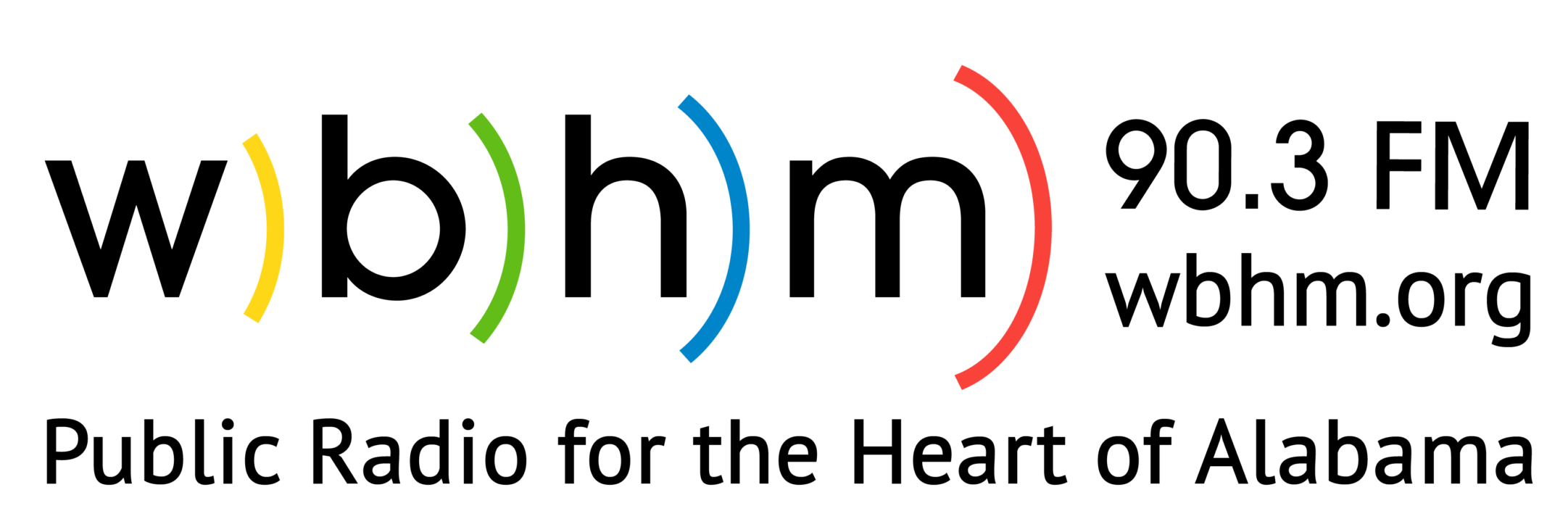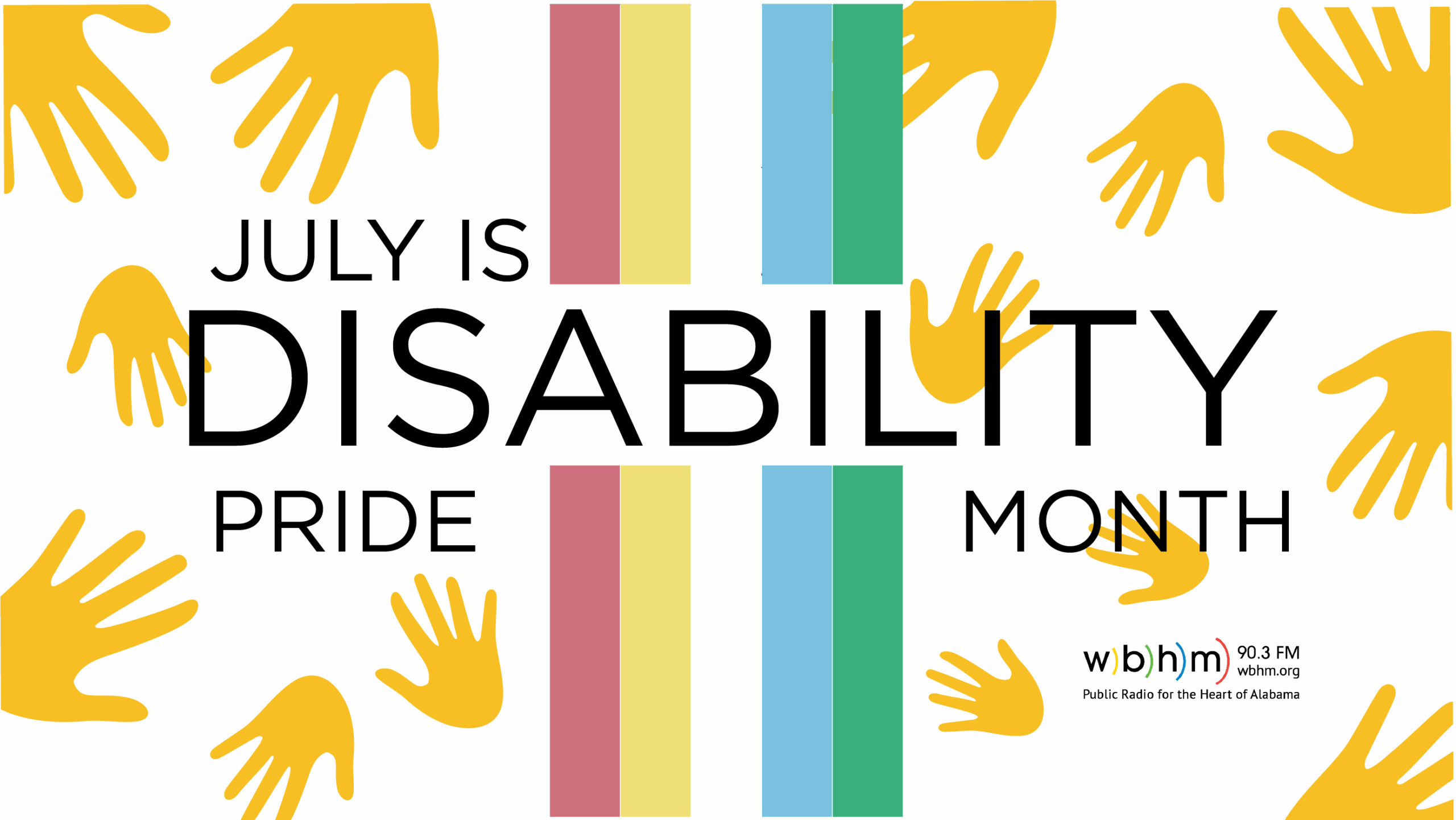In New Orleans, students are using Anne Frank’s story to teach each other about injustice
It’s St. Patrick’s Day and middle-school student Abby Woods and her classmates are guiding a handful of third-graders through a maze of tall panels in Thomas Hall at Loyola University in New Orleans.
The room used to be a chapel, and beams of blue, purple and orange-tinted light shine on the students as they learn about Anne Frank, the young Jewish girl who fled Germany with her family and hid in a secret compartment of a building in Amsterdam as Nazism grew.
“Over here we see Anne’s life in the secret annex. This is where she would write in her diary,” Woods says, pointing to a panel. “She also liked a lot of movie stars like celebrities, actors, singers. Kind of like we do — we like all these singers and everything. She did the same thing.”
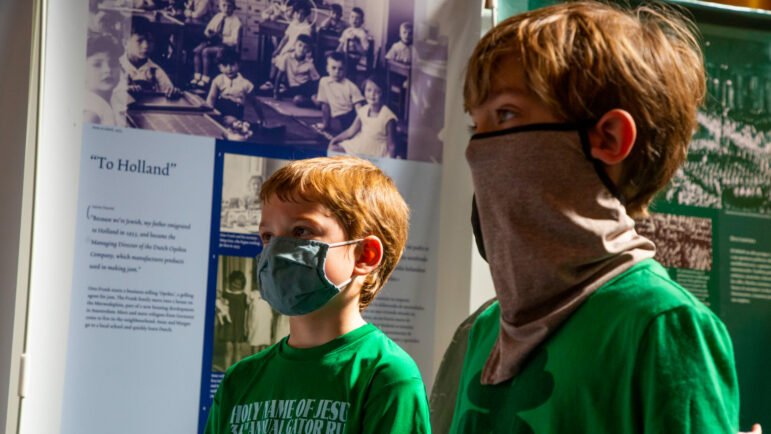
Nearby, another student, Daphne Beasley, gently explains to another group of elementary schoolers that Nazis sent Frank, her older sister and many other children to work in concentration camps, where the elderly and sick were often gassed to death.
The young teens were trained to share the horrors and tragedies of the Holocaust by university students and staff from the Anne Frank House — a museum housed in the same place where the Frank family hid after Germany invaded the Netherlands.
The training taught them about perpetrators of war crimes during World War II, but also about the people who helped Jews remain safe, like Miep Geis — who helped hide the Frank family and kept Anne Frank’s diary once the group was captured.
The middle school students also learned about the people who stood by as injustice happened around them. Ulisse Dacandia said he learned to step up when he sees discrimination.
“I want to stand up for them since it would just be mean to just be a bystander,” he said.
Trainers then used Frank’s story to teach the preteens how to identify injustice as it happens today. By the end of the training, Beasley saw parallels between how Jews were treated during World War II and the enslavement of Black people in the U.S.
“We’re learning about when slavery was happening. And I guess, in a way, the Nazis were similar to slavery because they were discriminating about something that doesn’t define you as a person,” she said.
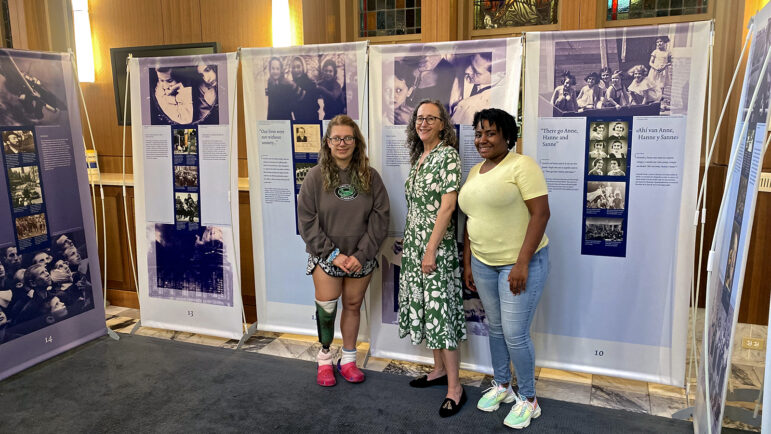
Addressing racism ‘in a constructive way’
The exhibit is tied to an honors level course at Loyola called “In Quarantine with Anne Frank.” Social justice professor Naomi Yavneh-Klos, designed it after she saw people making comparisons between COVID-19 pandemic lockdowns and Anne Frank’s life in hiding.
“I suddenly began to see the name Anne Frank all over social media,” Yavneh-Klos said. “All of these hideous memes, like, ‘Was Anne Frank this bored?’ or ‘Was Anne Frank this horny?’”
Yavneh-Klos cut a year-long Fulbright cultural exchange program short because of the pandemic and returned to the U.S. with the panels from the exhibit in her luggage, with hopes of showing it once things got back to normal.
Soon after she returned, George Floyd was murdered by Minneapolis police officer Derek Chauvin, while three other officers stood by without intervening. She began to make connections between what happened to Frank and her family and the injustice of Floyd’s death. She used these connections to design the class to teach her students about the dangers of systems that “perpetuate unjustified inequities.”
“Obviously, we’re not going to solve the problem of racism in our course, but the idea is that they have to be thinking about how the problem might be addressed in a constructive way,” Yavneh-Klos said.
In her classroom, tables face each other in a circle that fosters discussion. Yavneh-Klos draws a line from the way Jews were treated in the 1940s to the vastly different experiences of modern-day refugees — Syrians who have been blocked from entering Western countries, and Ukrainians who have been welcomed by fellow Europeans as Russia’s invasion of their country continues.
“It’s this whole thing about racism and, we’re gonna help the people who are more like us because we can see ourselves in them,” Kaley Delker, a freshman at Loyola, said during one class. “But we can’t see ourselves in other people who either aren’t our religion or don’t look like us.”
Delker said she took the course to understand, “what injustice really is.”
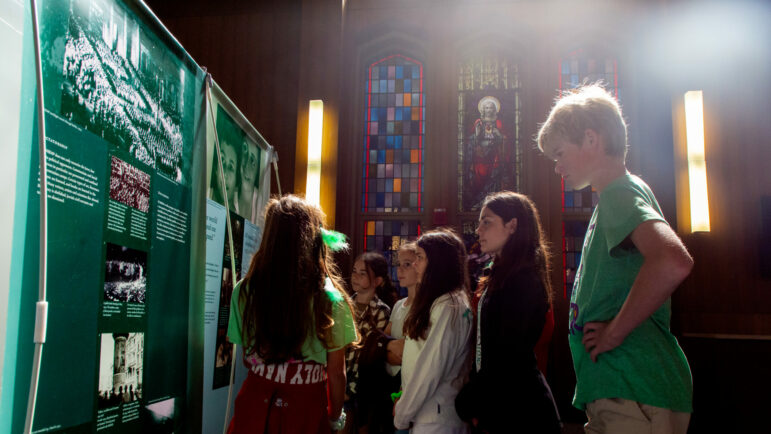
A fuller picture of the Holocaust
Yavneh-Klos’s course also teaches her students about the dangers of sharing a single story the way Frank’s is canonized. They take apart concepts, like the idea that Anne Frank was a little Dutch girl when she and her family were actually refugees from Germany.
One student, Diamond Dixon, said she took the class to see a fuller picture of the Holocaust.
“There are many voices that are forgotten or haven’t really been heard,” Dixon said. “You need to understand how other marginalized groups were treated in this time, not just Jews. We need to know the hierarchy of the situation. And I just believe in a well-rounded view.”
Dixon and Delker also participated in the training from Anne Frank House alongside the middle-schoolers. Dixon said it taught her the importance of every story. She thinks the exhibit could be impactful in the Deep South, where many marginalized people lack representation.
“I think an exhibit like this teaches you the importance of having a voice and letting it be heard,” she said.
Dixon and Delker said they were impressed by the younger students’ grasp of the information during the training, especially when they worked on diversity-building activities.
“You could just see their faces lighting up when they started to put all the puzzle pieces together like we did,” Delker said.
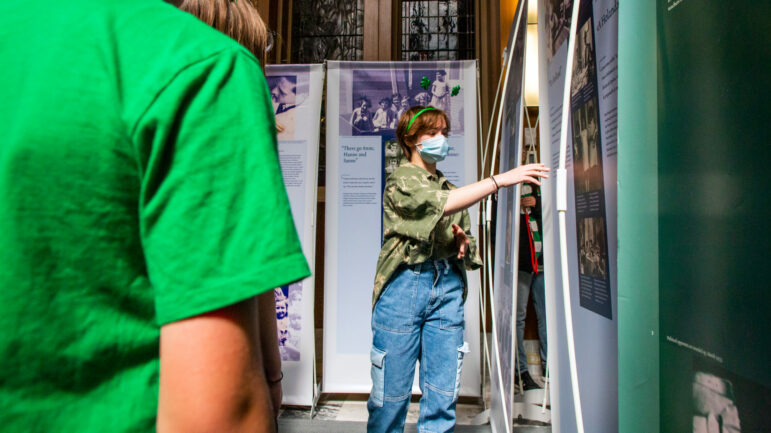
‘Near-peer education in New Orleans’
This is exactly how Yavneh-Klos envisioned the exhibit would work. She calls it “near-peer education.”
“It’s so exciting [to learn from] kids who are a little bit older than you [and] are just so cool and [who] you don’t really get an opportunity to spend time with,” Yavneh-Klos said. “And it also is a little bit safer to have a conversation with them. You feel like there’s somebody who understands you and has more recently been in your shoes.”
She found that many of her university students had gotten very little education about the Holocaust while in grade school and that the connections they were offered linking that point in history with prejudice in today’s society were shallow.
“It’s really important that they understand the various forms that hatred can take and also that anti-Semitism is one — it is still existing today — and it’s one of the multiple forms of ungrounded or unfounded bias and racism that we can find today,” Yavneh-Klos said.
Brian Whaley, another middle-school student, said after the training he could more easily identify when people in his online community were making discriminatory jokes.
Yavneh-Klos sees the exhibit as an opportunity to educate children in New Orleans from different socio-economic and cultural backgrounds. Now that Anne Frank House has trained her university students and the middle schoolers from Holy Name of Jesus, she’s hoping that the young guides can educate children from other schools in the districts starting in the fall. Those students would then pass on what they’ve learned to their younger schoolmates.
In a city where the poverty level — 23% — is well above the nation’s 11.4% rate, she said it’s important to reach children from disparate groups.
“A lot of these disparities are because of systems that are in place, that have been in place for a long time, that create these inequities,” Yavneh-Klos said. “We love the idea of bringing kids from all of the very different schools in New Orleans together for this training … and really help kids learn to stand up against these distinctions.”
This story was produced by the Gulf States Newsroom, a collaboration among Mississippi Public Broadcasting, WBHM in Alabama and WWNO and WRKF in Louisiana and NPR.
Migrants deported from U.S. to Salvadoran prison remain under U.S. control
The government of El Salvador has acknowledged to United Nations investigators that the Trump administration maintains control of the men who were deported from the U.S. to a Salvadoran prison.
DHS ends Temporary Protected Status for thousands from Nicaragua and Honduras
Some 76,000 people from Nicaragua and Honduras were covered by TPS, which provides protection from deportation and grants work permits to people from certain nations affected by war or natural disasters.
BRICS nations push back as Trump warns of tariffs
Leaders of the BRICS group of emerging economies meeting for their annual summit had hoped to downplay any differences with the U.S. But even a toned down group proclamation drew the ire of President Trump.
DOJ says no evidence Jeffrey Epstein had a ‘client list’ or blackmailed associates
The two-page memo outlines the "exhaustive review" the department conducted of the Epstein files in its possession, and also reiterates that Epstein died by suicide, contrary to some conspiracy theories.
Floods are getting more dangerous around the country, not just in Texas
The deadly floods in Central Texas were caused by extremely heavy rain. Climate change is causing even more rain to fall during the heaviest storms.
Near old Montana mine, special clinic for asbestos-related illness fights to survive
The Center for Asbestos Related Disease in Libby, Montana, closed in May after a court judgment. The clinic's federal funding is also threatened. Patients with scarred lungs worry about what's next.
